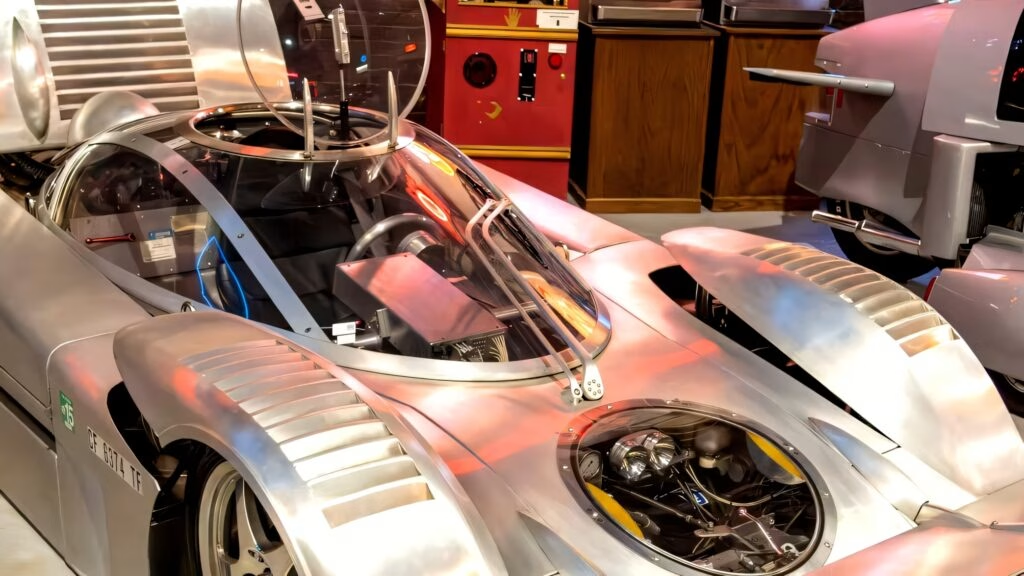What Makes the Sea Lion Amphibious Car So Unique?
Imagine a car that doesn’t just hug the road but also glides across the water. That’s the Sea Lion—a handbuilt, one-of-a-kind amphibious vehicle crafted by Marc Witt over six painstaking years. Unlike most amphibious cars that compromise on both land and water performance, the Sea Lion was designed to push the boundaries of speed and engineering. It’s not just a quirky experiment; it’s a serious machine with a supercharged 13B rotary engine straight out of a Mazda RX-7, capable of hitting up to 180 mph on land. That’s not a typo. We’re talking true sports car territory, only this one can also float.
How Does the Sea Lion Transition Between Land and Water?
Switching from road to river isn’t just a matter of flipping a switch, but the Sea Lion makes it look almost effortless. On land, it behaves like a low-slung, aluminum-skinned rocket, thanks to its lightweight CNC-milled and TIG-welded 5052 aluminum panels. When it’s time to get wet, side pods provide flotation, and a jet propulsion system kicks in. The clever bit? The same steering wheel that controls the front wheels on land also directs the rear thruster in the water. No need for complicated levers or separate controls—just one wheel to rule them all.
What’s Under the Hood (and Hull)?
The heart of the Sea Lion is its supercharged Mazda 13B rotary engine. If you’ve ever heard an RX-7 at full tilt, you know the sound is unmistakable—now imagine that with the added whine of a supercharger. This setup helped the Sea Lion claim the title of the world’s fastest amphibious car on land when it debuted in 2012. While other amphibious vehicles might outpace it on water, few can match its road performance. Marc Witt reportedly clocked it at 130 mph at the El Mirage dry lake bed, a legendary proving ground for speed freaks.
How Practical Is the Sea Lion for Everyday Use?
Let’s be honest: practicality isn’t the Sea Lion’s strong suit. It’s a single-seater, so forget about bringing friends along for the ride. The large chin spoiler that flips up for aquatic mode? It can actually block the driver’s view—a bit of a design quirk, to put it mildly. There’s also the small matter of legality. As far as anyone can tell, the Sea Lion isn’t street legal, and its current seaworthiness is a question mark. Mecum Auctions, where it’s set to go under the hammer, hasn’t provided many details about its present condition. So, if you’re dreaming of a daily amphibious commute, you might want to keep looking.
What’s the Appeal of a Handbuilt Amphibious Car?
Despite its impracticalities, the Sea Lion is a testament to what happens when engineering meets obsession. It’s not just a car—it’s a rolling (and floating) piece of art. The level of craftsmanship is staggering: everything from the chassis to the body panels was built from scratch. For collectors and enthusiasts, it’s the ultimate conversation starter, a symbol of what’s possible when you throw out the rulebook and build for the sheer joy of it. There’s a certain magic in that kind of overengineering. It’s not about utility; it’s about pushing the envelope.
Are Amphibious Cars Gaining Popularity?
While the Sea Lion is an extreme example, interest in amphibious vehicles has been quietly growing. Some countries, like Brazil, have even considered legislation to encourage automakers to produce more amphibious models, especially for regions prone to flooding. However, most offerings on the market today are either slow, utilitarian, or both. The Sea Lion stands out because it refuses to compromise on speed or style. According to a 2023 report from the International Transport Forum, niche demand for amphibious vehicles is expected to rise in areas facing climate-related challenges, but don’t expect to see fleets of Sea Lions anytime soon.
What Should Potential Buyers Know Before Bidding?
If you’re tempted to raise your paddle at the upcoming auction, keep a few things in mind. First, this is a prototype, not a production vehicle. That means maintenance and repairs will be a DIY affair or require a specialist who’s comfortable with custom aluminum work and rotary engines. Second, check the legal status in your area—many jurisdictions have strict rules about what can be driven on public roads or waterways. Finally, remember that this is a single-seater. It’s a toy for the truly dedicated, not a family cruiser.
Why Do Enthusiasts Love Oddball Engineering Projects Like the Sea Lion?
There’s something irresistible about vehicles that break the mold. The Sea Lion isn’t just a car or a boat—it’s a bold answer to the question, “Why not both?” For many gearheads, the appeal lies in the challenge: building something that shouldn’t work, and then making it work anyway. It’s the same spirit that drives people to restore barn finds or modify classic cars beyond recognition. The Sea Lion is a celebration of creativity and technical skill, and that’s why it turns heads wherever it goes.
The Big Takeaway
The Sea Lion isn’t about perfection—it’s about smarter adjustments. Start with one change this week, and you’ll likely spot the difference by month’s end. Whether you’re chasing land speed records or just tinkering in your garage, the real magic happens when you dare to try something new.

